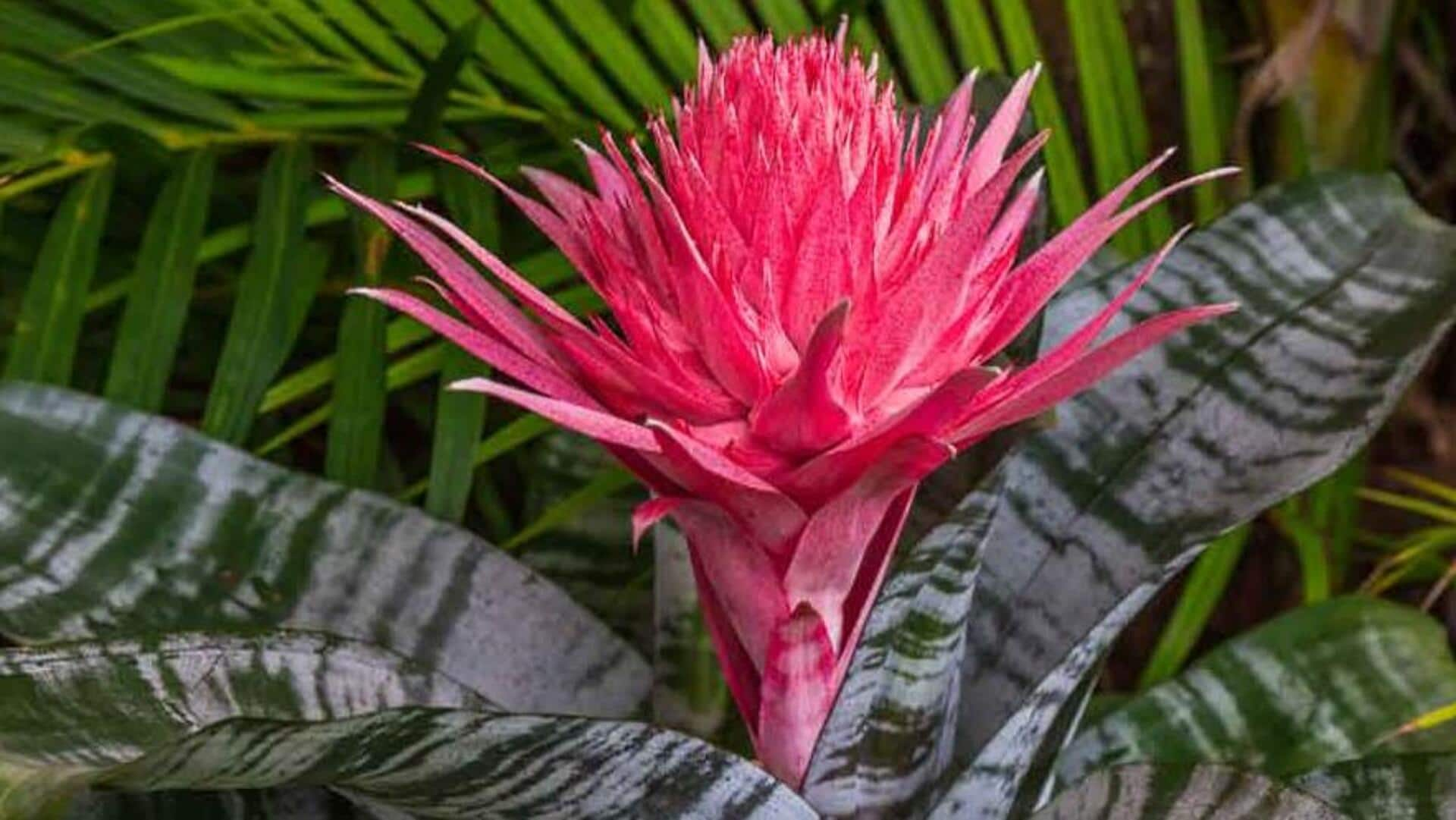
How to grow bromeliads at home
What's the story
Bromeliads make a popular indoor gardening choice owing to their colors and unique look. These tropical beauties are also relatively easy to maintain, making them a perfect choice for both beginner as well as expert gardeners. Given the right conditions, and a few expert tips, you can grow bromeliads indoors. Here are some practical tips to create an ideal environment for these beauties.
Container selection
Choose the right container
Selecting the appropriate container is crucial for bromeliad growth. Opt for pots with drainage holes to prevent waterlogging, which can lead to root rot. A pot that is slightly larger than the plant's base will provide adequate space without overwhelming it. Consider using a decorative outer pot or planter to enhance your home's aesthetic while maintaining functionality.
Light requirements
Provide adequate light
Bromeliads love bright, indirect light. Keep them near windows where they can soak up filtered sunlight during the day. Avoid direct sunlight as it may burn their leaves. If natural light isn't enough, try fluorescent lights or grow lights about 12 inches above the plant to simulate natural conditions.
Humidity control
Maintain proper humidity levels
These tropical plants like it humid, preferably around 50% or more. To recreate that indoors, use a humidifier or keep a tray of water near the plant to increase moisture in the air. Misting bromeliads once in a while can also help with humidity, but don't go overboard as too much moisture can lead to fungal problems.
Watering technique
Water sparingly but consistently
Bromeliads require precise watering practices; they don't need to be watered as frequently as other houseplants. Water directly into the central cup that their leaves form rather than soaking the soil completely every time you water them. This mimics the rainfall in their natural habitat while also preventing overwatering issues like root rot.
Fertilization tips
Fertilize wisely
Fertilizing bromeliads should be kept to a minimum as they're not heavy feeders like most indoor plants today—ferns, palms, etc. Use half-strength liquid fertilizer every two months during active growing seasons (spring through summer) only—avoid during dormancy periods when growth slows down considerably due mostly to temperatures dropping below optimal ranges required by most species within this family group overall.